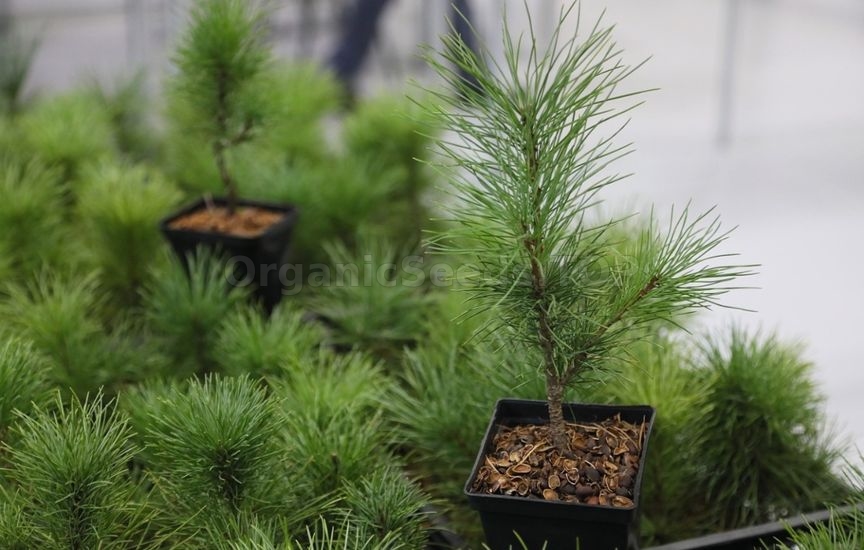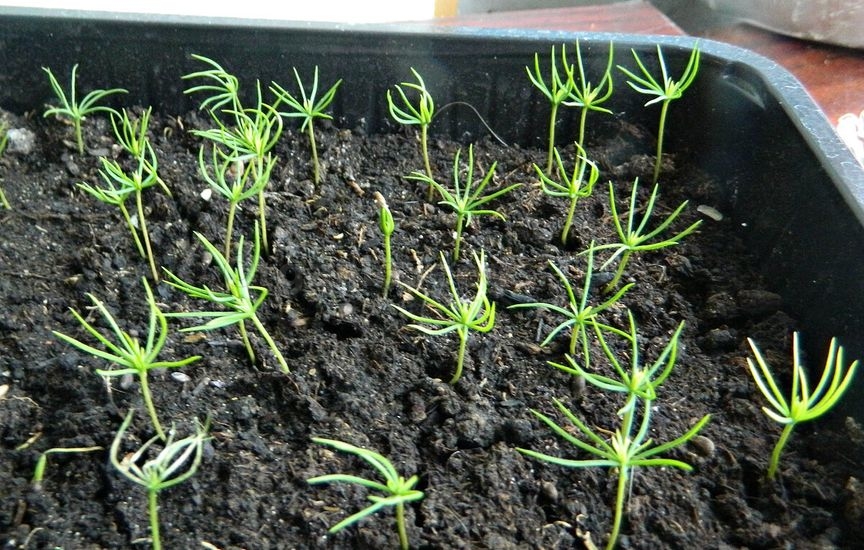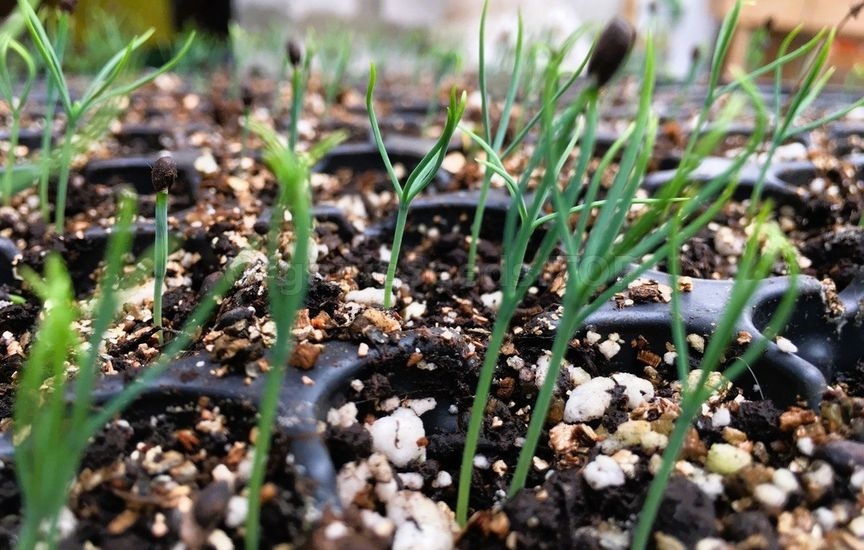How to grow Conifers from seeds |
Conifer seeds behave differently: some germinate quickly and easily immediately after sowing, while others, being dormant, require exposure to cold, i.e. stratification. This artificial process imitates what happens in nature to seeds after they fall to the ground in the fall. For cold stratification, seeds are mixed with wet peat or sand and kept in the refrigerator at a temperature of +1-4°C for 1-6 months (depending on the species). After this, they can be sown or stored for some time. If the seeds have sprouted in the refrigerator, they are sown immediately. To prevent the shoots from becoming infected with pathogenic fungi, the seeds are treated in a 0.5% solution of potassium permanganate for 2 hours before sowing.  Spruce, fir, larch, pine with small seeds (like Scots pine), thuja, cypress seeds can germinate without stratification. But exposure to cold for a month improves their germination. Cedar pines are sown in the fall or stratified for 4-6 months. But junipers and yews require two-stage stratification. First, their coniferous seeds are mixed with wet sand and kept in a warm (15-2Q-C) ventilated room for 2-4 months. Then they are transferred to the refrigerator (its lower compartment) for 2-3 months. This is how summer and winter are imitated. You can simply sow the seeds and wait 2-3 years. Reliable, and no special efforts are required. The only danger in this case is mice, which can completely destroy the crops. Coniferous seedlings are small and delicate, they do not tolerate overheating and drying of the soil, dry air and strong wind. Therefore, it is better to grow them in partial shade, where the soil and air retain more moisture than in an open place. Pine and larch are more resistant. In general, for all coniferous seedlings, the ideal place would be a greenhouse, hidden from the scorching midday sun in the shade of trees or buildings. If the space is open, then the crops will have to be shaded from the south side with the help of shields. Weeds, as you know, always outgrow cultivated crops in growth. Seedlings of all types of conifers will be no exception. Therefore, you need to start preparing the soil with a lot of weeding: deep digging of the soil or treatment with herbicides, for example, Roundup or Lontrel. Thanks to this, both perennial rhizomes and seeds of most weeds will be destroyed.  Sandy loam soil, rich in organic matter, is best suited for growing conifer seedlings. It warms up faster in the spring, retains water well and provides seedlings with all the elements of mineral nutrition. Medium and heavy loams dry out and warm up slowly in the spring, quickly become compacted and become waterlogged after watering or rain, forming a crust, which prevents the roots from fully “breathing”. And yet, natural soil is not very good for seed germination and the development of conifer seedlings. Sphagnum peat or sawdust seasoned with complex fertilizers is much better suited for these purposes. It is important that the pH of the substrate is 5-6. It is even easier to use ready-to-use peat substrate for sowing. It already has optimal acidity and is seasoned with fertilizers. Here, shoots of spruce, pine, thuja, larch and other conifers appear in the substrate in the spring earlier than from the soil. And the germination rate of seeds here is also much higher. Peat is very loose, warms up well, easily absorbs moisture and lets air through. It is sterile - does not contain pathogenic fungi and bacteria. But it is because of them that a huge number of conifer seedlings (sometimes all 100%) die, sown in ordinary soil. According to the experience of foresters, it can be said that the height of annual seedlings on a peat substrate is on average 55% higher than on mineral soil, and biennials - 48%. Mass sowing is done in rows on beds, and with a small number of seeds - in pots. The soil surface (the so-called bed) is leveled and slightly compacted with a wooden block. The seeds are evenly distributed along the bottom of the row so that the distance between them is approximately 1 cm. Small seeds, such as those of spruce, fir, larch, Scots pine and other species, are sown to a depth of 0.5-1 cm. "Pine nuts" - to a depth of 2-3 cm. The following rule is followed: the depth of planting should be equal to 4-5 times the thickness of the seed. The crops are sprinkled with sand, which will facilitate the emergence of small and tender sprouts, prevent the formation of a crust and the growth of moss. Shoots usually appear 2-4 weeks after sowing. Sprouts require special attention and careful care.  The crops are watered, loosened and weeded. Water early in the morning and in the evening, and then loosen. The roots of the seedlings are very weak, which means they require regular moistening. The seedlings are fed with easily soluble mineral fertilizers. The first time is about a week after the germination of the bulk of the seeds and the shedding of empty seed coats from the sprouts. The next feedings are every 2 weeks. To prepare young plants for winter, in August-early September they are given an autumn fertilizer that does not contain nitrogen - potassium monophosphate, ash, etc. As soon as plants with fungal infections are detected, all seedlings are sprayed with a solution of Fundazole or other fungicides. Diseased seedlings are removed. In one place, seedlings of most conifers are grown to a size of 20-30 cm, usually for 2-3 years. After this, they are planted in a permanent place or transplanted and grown to the desired size. |
|
|
